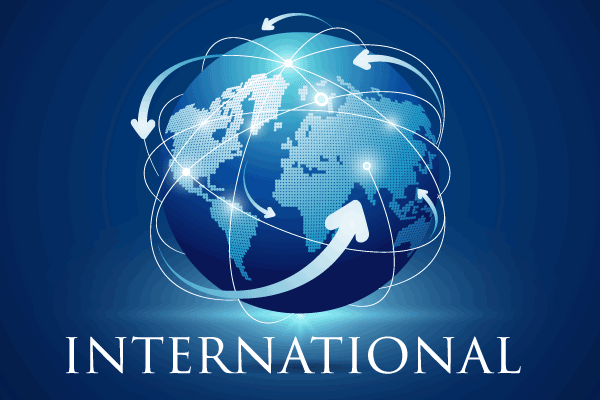
President Joe Biden launched the Indo-Pacific Economic Framework (IPEF) negotiations with 12 other countries on Monday, May 23.
Those countries are Australia, Brunei Darussalam, India, Indonesia, Japan, South Korea, Malaysia, New Zealand, the Philippines, Singapore, Thailand, and Vietnam.
The IPEF is not a traditional trade agreement in that it seeks to improve trade relations by reducing “behind-the-border” trade barriers; leaves enforceability intentionally vague; and does not guarantee that the agreement won’t be voided if a new administration takes over in 2024.
The official statement states this framework is intended to advance resilience, sustainability, inclusiveness, economic growth, fairness, and competitiveness and aims to contribute to cooperation, stability, prosperity, development, and peace within the region.
Previous Agreements
Prior trade agreements in the Indo-Pacific were designed to ensure the United States’ involvement in the region. The California Chamber of Commerce-supported Trans-Pacific Partnership (TPP) was signed in 2016 after five years of negotiations by ministers representing Australia, Brunei Darussalam, Canada, Chile, Japan, Malaysia, Mexico, New Zealand, Peru, Singapore, United States, and Vietnam, who signed the TPP in Auckland, New Zealand.
The new IPEF excludes Canada, Mexico, Chile and Peru, and has brought India, Indonesia, and the Philippines to the negotiating table.
Observers are aware that the lame duck Congress in 2016 did not approve the TPP as hoped, allowing the next administration to pull out of the agreement.
After the United States left the TPP, the remaining countries formed the Comprehensive and Progressive Agreement for Trans-Pacific Partnership (CPTPP) in 2018. The CPTPP entered into force in December 2018, creating the third largest free trade area in the world by gross domestic product (GDP) and reducing tariffs in countries that amount to more than 13% of the global economy, spanning a market of 500 million people.
Indo-Pacific Framework
The IPEF was formulated to once again bring the Indo-Pacific to the forefront of the United States’ international trade agenda. Coupled with President Biden’s first visits to South Korea and Japan, it has done just that.
Trade ministers are scheduled to meet for the first time in the coming weeks with a goal of finishing negotiations in the next 18 to 24 months. This end date coincides with U.S. plans to host the annual leaders’ summit for the Asia-Pacific Economic Cooperation (APEC), of which India is not a member, at the end of 2023.
Many stakeholders, including the CalChamber, have recommended prioritizing the Indo-Pacific as China’s influence grows in the region.
The Biden administration’s Department of Commerce will base negotiations on three “pillars”:
• a “resilient economy” regarding supply chain and infrastructure;
• a “clean economy” with energy and decarbonization; and
• a “fair economy” with tax and anticorruption elements.
The U.S. Trade Representative (USTR) will lead negotiations on a fourth “pillar” focused on a “connected economy” or fair and resilient trade, which includes digital trade, labor, environment, agriculture, and other areas.
It is also expected that the USTR will “pursue an accelerated implementation” of the World Trade Organization’s trade facilitation agreement.
The Indo-Pacific is the most populous, fastest-growing and most economically dynamic part of the world. By 2030, it will represent 66% of the world’s middle class, and 59% of all goods and services sold to middle class consumers will be sold in the Indo-Pacific. Developing nations in the region will need about $1.5 trillion in investment every year for the next decade to develop the infrastructure necessary to sustain their growth.
Despite the Indo-Pacific region’s growth, over the last decade, growth in U.S. exports to Asia has trailed overall U.S. export growth. The United States is gradually losing market share in trade with Asian countries.
Meanwhile, Indo-Pacific countries have signed more than 150 bilateral or regional trade agreements, while the United States has just four trade deals in the Indo-Pacific region — with Australia, Singapore, South Korea and Japan.
CalChamber Position
The CalChamber, in keeping with longstanding policy, enthusiastically supports free trade worldwide, expansion of international trade and investment, fair and equitable market access for California products abroad and elimination of disincentives that impede the international competitiveness of California business.
New multilateral, sectoral and regional trade agreements ensure that the United States may continue to gain access to world markets, resulting in an improved economy and additional employment of Americans.
The CalChamber supports free trade agreements with participants that comply with current international norms and obligations and commit to high standards negotiated for trade and investment, as well as intellectual property protection and enforcement. Such agreements ensure that the United States may continue to gain access to world markets, which will result in an improved economy and additional employment of Americans.

